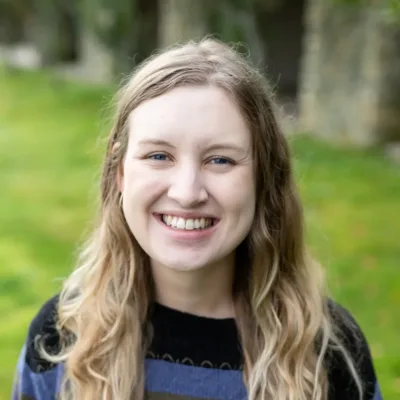
Still from "The Street Project"
“We should not have highways running through our neighborhoods.”
Arizona is a dangerous place for pedestrians.
According to the most recent data from the National Highway Traffic Safety Administration, the Grand Canyon State had the sixth-highest pedestrian fatality rate in the US, with 222 pedestrians killed in 2020. Of those, 140 were killed in Maricopa County.
Producer Jennifer Boyd explored pedestrian safety in Phoenix along with one other US city—New York City—for her documentary “The Street Project,” which premiered in August.

Boyd got involved in traffic violence prevention when she wrote and directed a documentary called “3 Seconds Behind the Wheel” that looked at distracted driving.
“I thought that if half of all of the fatalities in the world happen outside of the car, and the other half happened inside the car to the driver or passengers, that maybe I’ve just explored inside the car, [and] maybe I should explore outside the car. What’s happening out here?” she told The Copper Courier.
Hitting Phoenix Streets
As she explored this idea, Boyd became interested in the situation in Phoenix after the City Council in 2019 opposed developing a Vision Zero plan, which has the goal of reducing deaths and severe injuries for all road users to zero. The city later voted in 2021 to fund the development of a Road Safety Action Plan, and this year they voted to incorporate Vision Zero into that plan.
As Boyd began researching Phoenix, she found Stacey Champion, a longtime advocate for pedestrian safety who has lived in Arizona for over 20 years.

“Having lived in other cities, having traveled all over the world, I just feel like our streets are just so dangerous by design,” Champion told The Copper Courier. “We should not have highways running through our neighborhoods.”
The documentary follows Champion as she asks local businesses to sign a petition to improve nearby road safety. At one point, Champion leads the viewers across a crosswalk in the Melrose District that has no stoplight, and she has to tell the cameraman to stop walking as a car rushes past without stopping for them.
RELATED: Low-Income Communities Learn to Tackle Climate-Fueled Heat
Boyd said she experienced Phoenix’s walkability difficulties herself when she was staying at an Airbnb in town. There was a taco shop across the road she wanted to get to, she said, but there was no safe way to cross the multi-lane street nearby.
“I had to make a decision and not go there and find something that was on the same side of the street as I was,” she said. “And that’s a shame because it was whatever yards away; I could see it. It was right there.”
Ideal Streets
“The Street Project” begins by showing how single-use zoning laws have morphed the idea of streets being shared by drivers, bicyclists, and pedestrians into cars taking priority, as people have had to travel further to complete all of their activities.
The documentary then shows how places like Copenhagen in Denmark have evolved to make more space for non-drivers—and increase efficiency and savings in the process. A bike lane there can move 6,000 people per hour, while a regular lane for cars can only move 1,300 people per hour.

“Everybody in a democratic society should have equal access to our largest public spaces, our streets,” Boyd said.
Boyd said she sees reasons to be hopeful about road safety in Phoenix, especially as the bipartisan infrastructure legislation passed last year is providing funding for projects like protected bike lanes.
“I’m not against cars—that would be silly. I love cars,” Boyd said. “But we just need to be able to equally respond and create safe spaces for other kinds of transportation that serve our communities.”
Champion said she has seen some improvement in the city’s bike lanes and street markings, but she still feels Phoenix is focusing on this issue for people who are recreating versus people who don’t have transportation, which is a problem.
“It is my hope that not only everyone in the Streets Department of the city of Phoenix and other streets department watches the documentary,” Champion said, “but that all of our elected officials watch the documentary to have a better understanding of not only what is possible, but to hopefully gain the spine to lead on the issue in a more meaningful and efficient manner.”
Public screening licenses for grassroots organizations are available here.
Looking for the latest Arizona news? Sign up for our FREE daily newsletter.
Politics

6 terrifying things that could happen if the Comstock Act is used to target abortion
Does 1873 sound like a really, really long time ago? Well, that’s because it is—but if Republicans and far-right anti-abortion activists have their...

He said what? 10 things to know about RFK Jr.
The Kennedy family has long been considered “Democratic royalty.” But Robert F. Kennedy, Jr.—son of Robert F. Kennedy, who was assassinated while...
Local News

Opinion: Strategies for Child Abuse Prevention
11 ways you can be an ally in the fight against child abuse. April is Child Abuse Prevention Month. In the United States, it is estimated that a...

Biden marks Earth Day by announcing $7 billion in solar grants
The Biden administration on Monday announced the recipients of its Solar For All Program, a $7 billion climate program that aims to lower energy...





